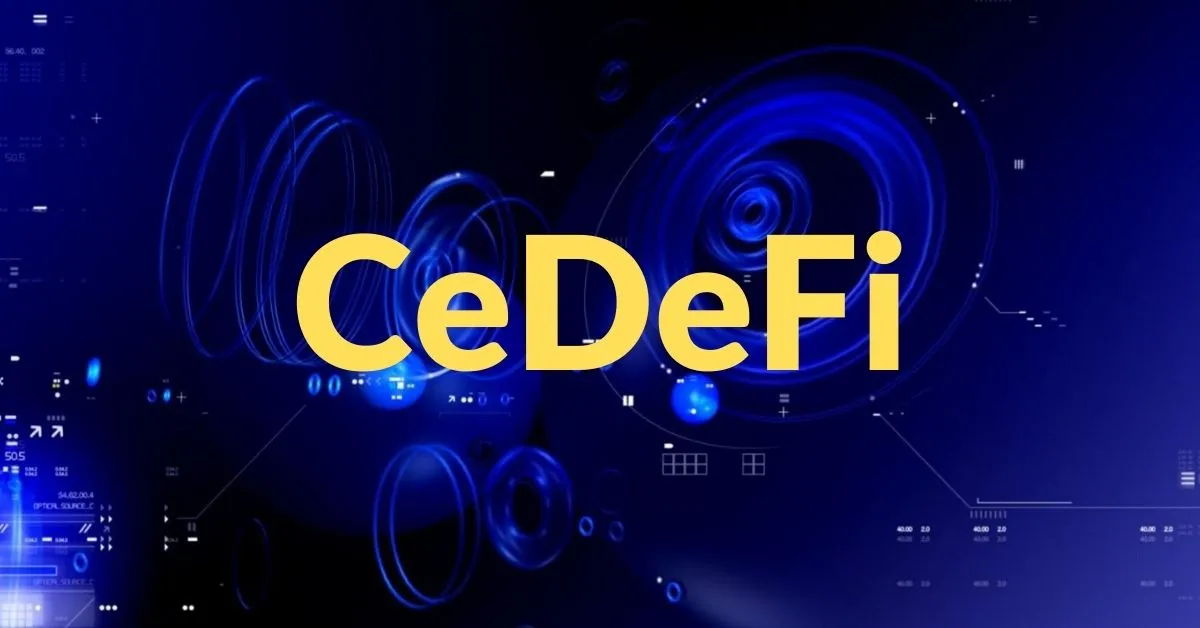
Coinposters
Explaining CeDeFi: Blockchain’s New Sensation

Many professionals in the industry saw Binance’s entry into the cryptocurrency exchange market as an aggressive effort aimed at displacing Ethereum.
CeDeFi, on the other hand, does not want to compete with other blockchain initiatives that are already active in the financial sector.
It’s possible that doing a thorough examination into the many facets of centralized DeFi on Binance can assist in shed additional light on the situation.
What is CeDeFi?
Within the realm of cryptocurrencies, the word “CeDeFi” is relatively new. It is widely believed that the term was first used by Changpeng “CZ” Zhao, the CEO of Binance, at the time when Binance debuted its Binance Smart Chain (BSC) in September 2020.
CeDeFi, which stands for “centralized decentralized finance,” is the ideal combination of centralized and decentralized financial systems, since it combines the most beneficial aspects of each of these organizational structures.
Companies are able to explore cutting-edge and contemporary financial solutions with CeDeFi, all while adhering to the traditional regulatory requirements for the financial industry.
Understanding CeDeFi
You are able to investigate a wide range of DeFi products, including decentralized exchanges (DEX), liquidity aggregators, yield farming tools, lending protocols, and a lot more via CeDeFi, and the transaction costs are quite reasonable.
By using CeDeFi, companies are able to implement one-of-a-kind smart contracts, as well as integrate a variety of goods and services to a single platform, all while assuring that transactions take place more quickly and reducing risks.
When it comes to traders, CeDeFi gives them the option to look for and select the best chances utilizing liquidity depth, transaction costs, network fees, KYC restrictions, and withdrawal fees. This results in less slippage, a larger availability of assets, and improved safety.
CeDeFi addresses the increasing issues of legislation and compliance in relation to cryptocurrency as well. CeDeFi makes institutional custodianship of decentralized financial protocols possible thanks to the combination of centralized and decentralized aspects of the financial system.
History
Binance came to the conclusion that it needed to develop a second blockchain network in order to compete with Ethereum and the DeFi ecosystem that it supports due to the fact that the success of Ethereum can be attributed to the presence of its smart contract capability.
As a direct consequence of this, Binance renamed its current blockchain network BNB Smart Chain. BNB Smart Chain is a fork of Ethereum that has been optimized to achieve both fast transaction throughput and cheap transaction costs.
Despite the fact that it eliminates decentralization and makes it more difficult to avoid censorship, it seems to be profitable. In spite of the fact that proponents of decentralization were critical of it, BNB Chain had meteoric growth beginning in September 2020, owing to its capacity to rapidly finance projects. This contributed to the development of CeDeFi.
In addition to Binance, investors looking for reliable passive income may construct hedged yield streams by using current digital strategies on the hybrid CeDeFi investment platform provided by Midas.
In addition, Midas asserts that it has a huge network of backend processes that, in the context of the unpredictable cryptocurrency market, strive to hedge and safeguard the front-end investment possibilities that are made available to individual investors.
The Midas digital environment has been secured thanks to the integration of a highly secure cryptocurrency custody and transfer mechanism called Fireblocks. FireBlocks offers digital security of a commercial-grade standard for assets that are held in stored custody.
Advantages of CeDeFi
- The level of secrecy provided by CeDeFi is superior to that of more conventional banking systems. This is due to the fact that transactions are carried out on a decentralized network, which makes it far more difficult for third parties to keep track of them.
- Existing users of CeDeFi systems have proven that the fees associated with CeDeFi are essentially minimal. This translates to lower transaction costs and quicker transaction speeds.
- One of the most significant benefits of CeDeFi is that it provides a better level of security compared to other conventional forms of financial infrastructure. This is due to the fact that transactions are carried out over a decentralized network, which makes it harder for hackers to focus their attention on a specific location.
- It lets new users discover DeFi by displaying validated trade options that have been screened by numerous parameters, such as KYC, fees, and more, which helps reduce the hurdles for less educated players in the market.
Closing Thoughts
There is still a long road ahead for crypto ecosystems before native goods are accepted by traditional institutions and investors. Developing a CeDeFi ecosystem is one method that may be used to increase use and the introduction of products that are in compliance with regulations.
CeDeFi is not immune to having its share of fraudulent activities. There have been a number of frauds in the CeDeFi area as a direct result of the absence of regulation. As a result, it is of the utmost importance to exercise extreme caution, to make use of only trustworthy CeDeFi protocols, and to consider CeDeFi to be a potential option for integrating decentralized financial goods and services into conventional financial institutions.
In conclusion, it is very apparent to see how it is going to completely revolutionize the current state of the financial sector.
The increasing breadth of digitization raises a number of challenges for the financial services industry, particularly with respect to safety and control, as well as transparency.
As a result, initiatives relating to decentralized finance, often known as DeFi, began to attract the attention of consumers who want democratic control over their financial activities.
Latest
Guides & Tutorials
09 May 2024
Guides & Tutorials
19 Apr 2024
Guides & Tutorials
16 Jan 2024
Guides & Tutorials
31 Aug 2023
Guides & Tutorials
24 Jun 2023
Guides & Tutorials
24 Jun 2023













